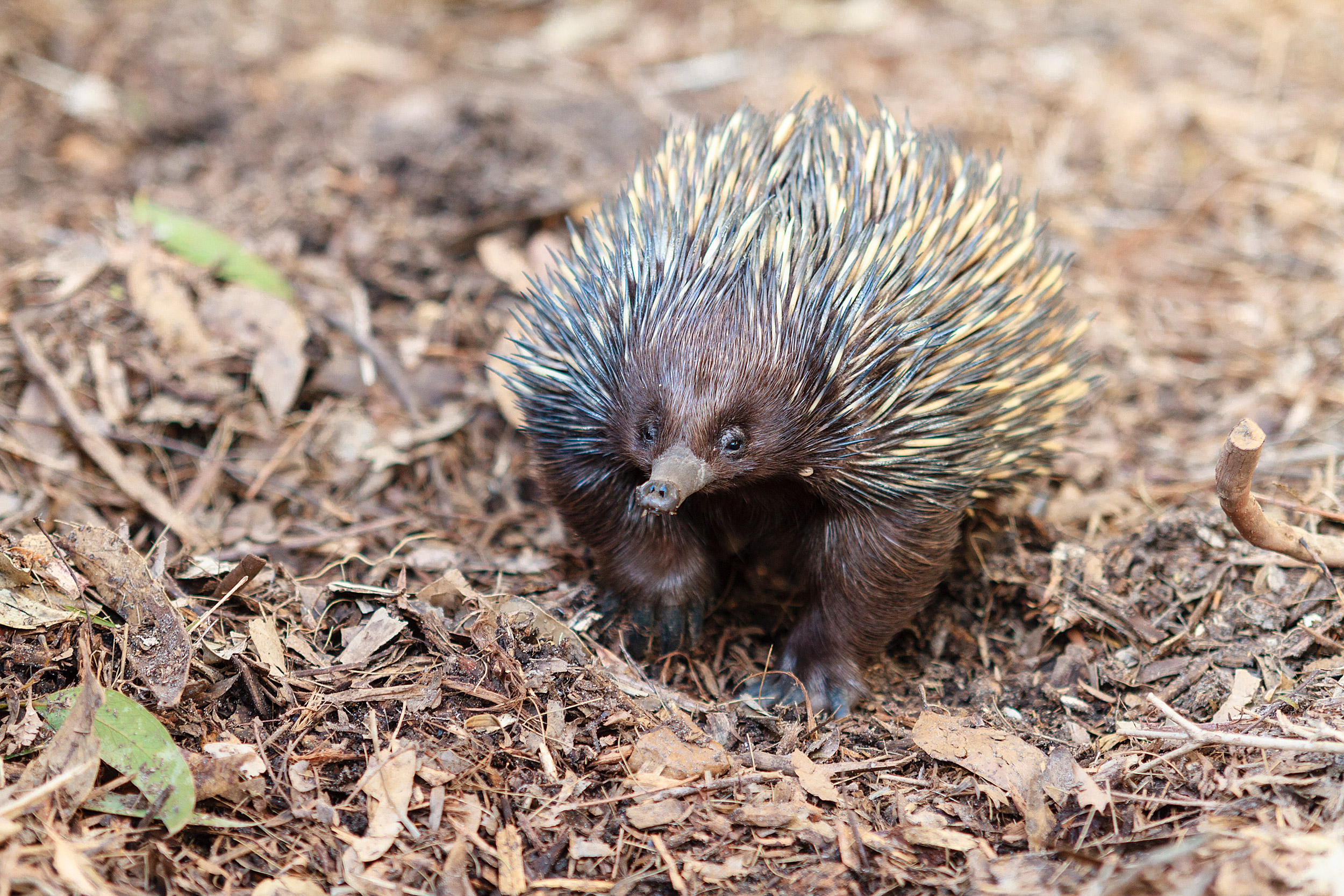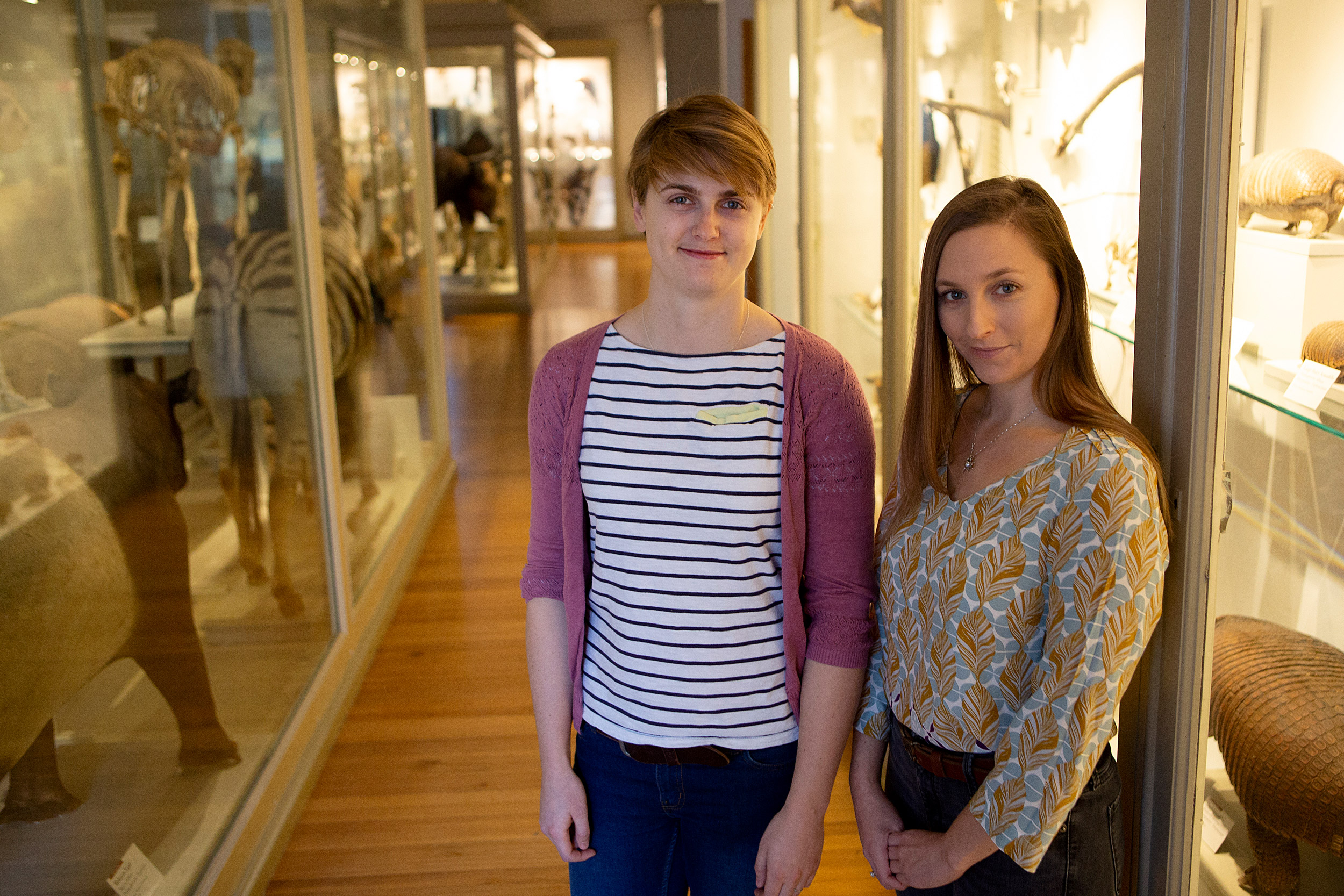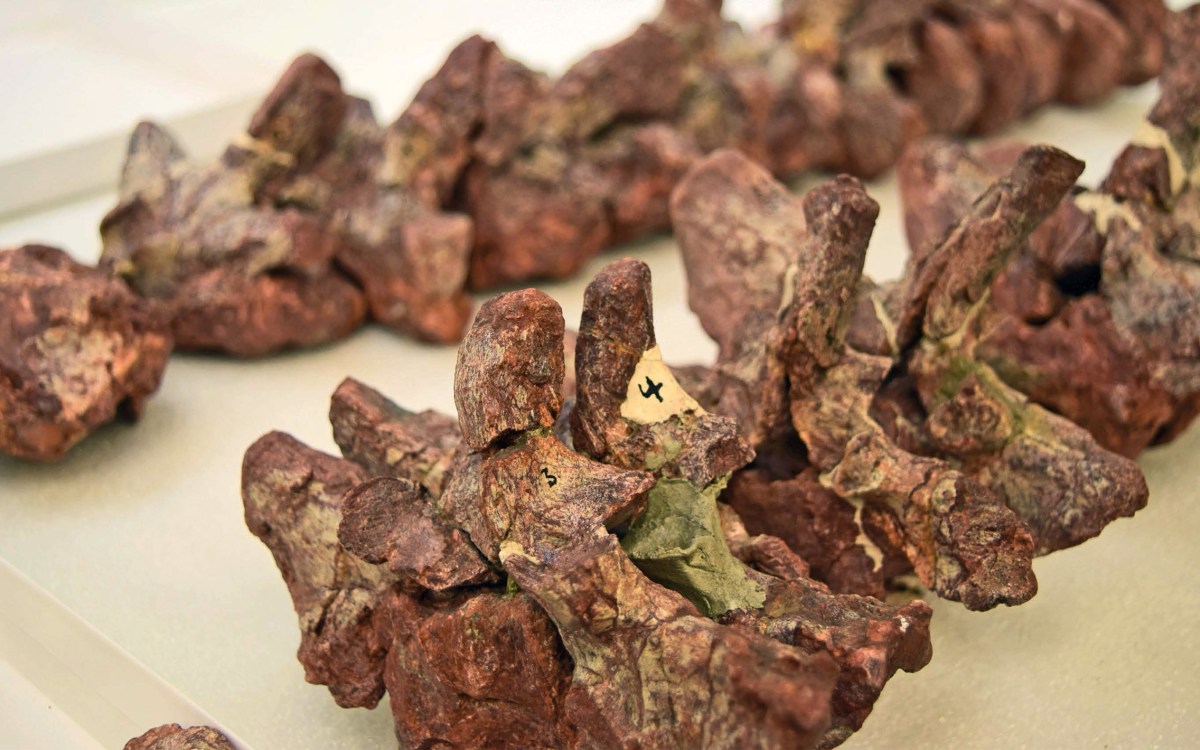
Harvard researchers are studying the echidna, which shares many anatomical features with mammal ancestors, to better understand how extinct species used their limbs.
How mammals grew diverse
Study models forelimbs to shed light on evolution
Mammals can use their forelimbs to swim, fly, jump, climb, dig, and nearly everything in between, yet the question of how all that diversity evolved has remained a vexing one for scientists.
To help answer that, Harvard researchers are turning to one of the most unusual mammals around: echidnas. These sprawling, egg-laying mammals have many anatomical features in common with mammal ancestors, and so can help bridge the gap between extinct and modern-day species.
Using a detailed, musculoskeletal model of an echidna forelimb, Sophie Regnault, a postdoctoral fellow, and Stephanie Pierce, associate professor of organismic and evolutionary biology, were able not only to shed light on how the little-studied echidna’s forelimbs work, but also to open a window into understanding how now-extinct mammals might have used their limbs. The model is described in a paper published in the Royal Society Open Science.
“Echidnas are not very well-studied, and little is known about their biomechanics.” Regnault said. “There are few related species, and echidnas themselves can be difficult to study because they have very large spines hiding underlying movements. We made this virtual model using CT scans that allow us to look in closer detail at how the skeleton and muscles interact with one another.”
The researchers discovered that the bony anatomy and muscles work together to optimize limb leverage and mobility for some movements. In particular, the configuration of muscles supports limb rotation important for the echidna’s sprawling gait.

Sophie Regnault (from left) and Stephanie Pierce are pictured in the Harvard Museum of Natural History.
Photo by Olivia Falcigno
“This model gives us unique insight into not only the echidna but can also guide reconstructions of extinct mammals,” Pierce said. “The similarities between the echidna forelimb skeleton and transitional animals can help us to understand the evolution of forelimb diversity in modern mammals.”
“If we find certain muscles have lots of leverage, it might suggest that certain postures or types of movement are more likely,” Regnault added. “We’re continuing to add data to our echidna model, and one thing we’re hoping to do is to understand how things like mobility and leverage can be used to predict how an animal might have stood or what kind of movements it could have made.”
“This study is part of a much larger project,” Pierce said.
The researchers’ ultimate goal is to reconstruct the evolution of the mammal forelimb by building similar models for fossils at key stages. The echidna model is a first step in understanding the relationships between form and function of the forelimb. By looking at how the mammal forelimb changed through time, the researchers hope to reveal how modifications to the skeleton led to the ecological and behavioral diversity we see today.
This research was supported with funding from the National Science Foundation.








